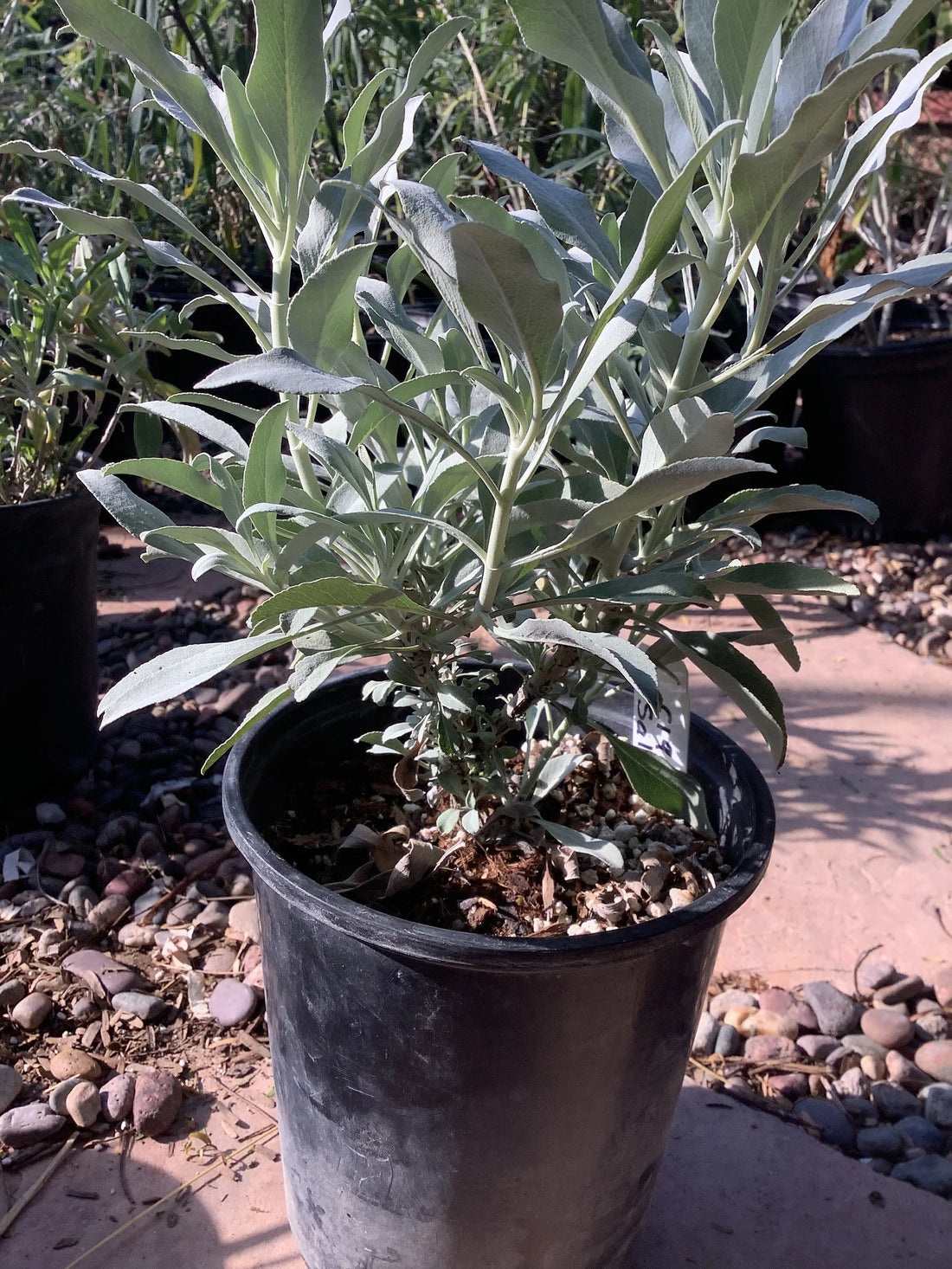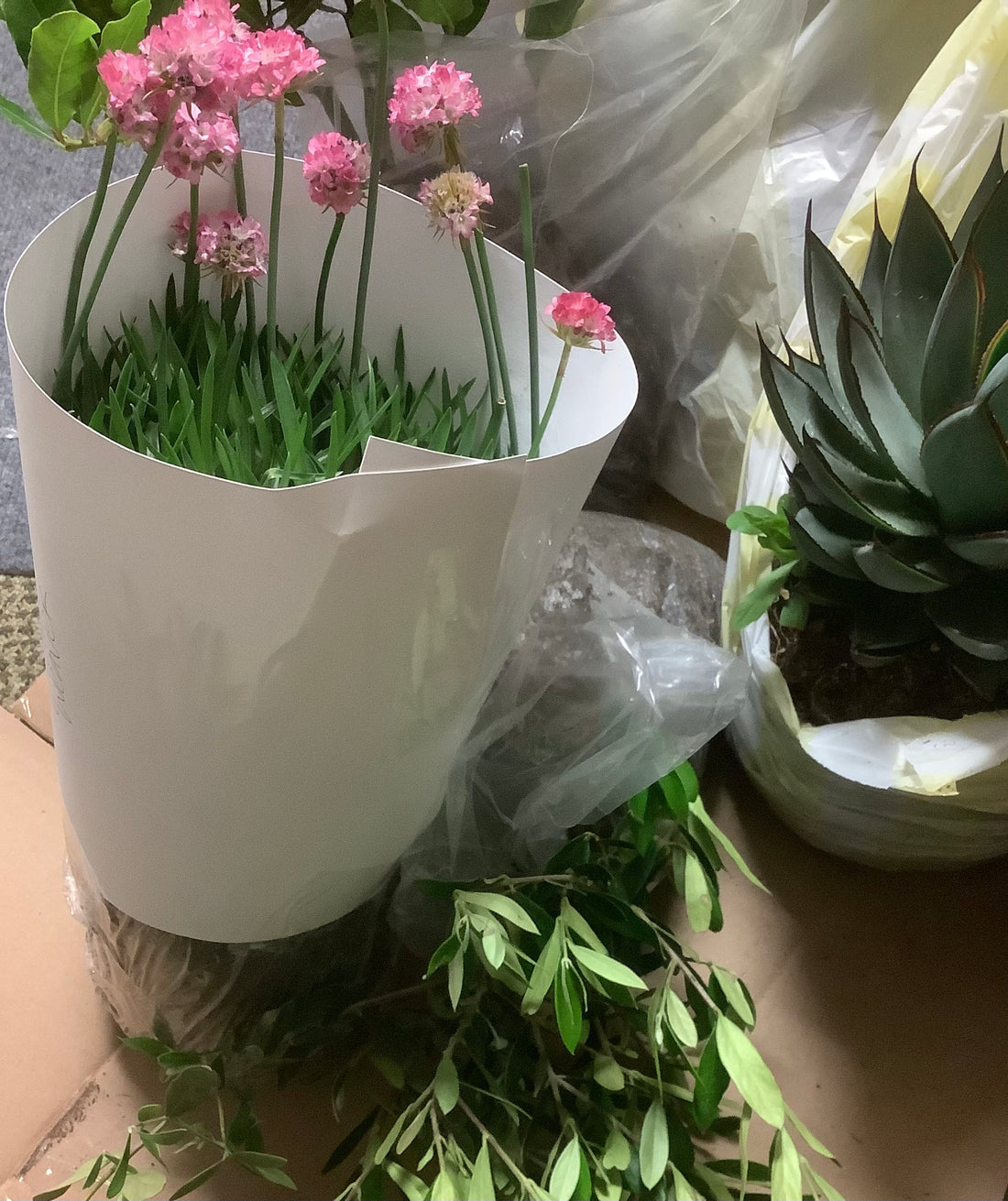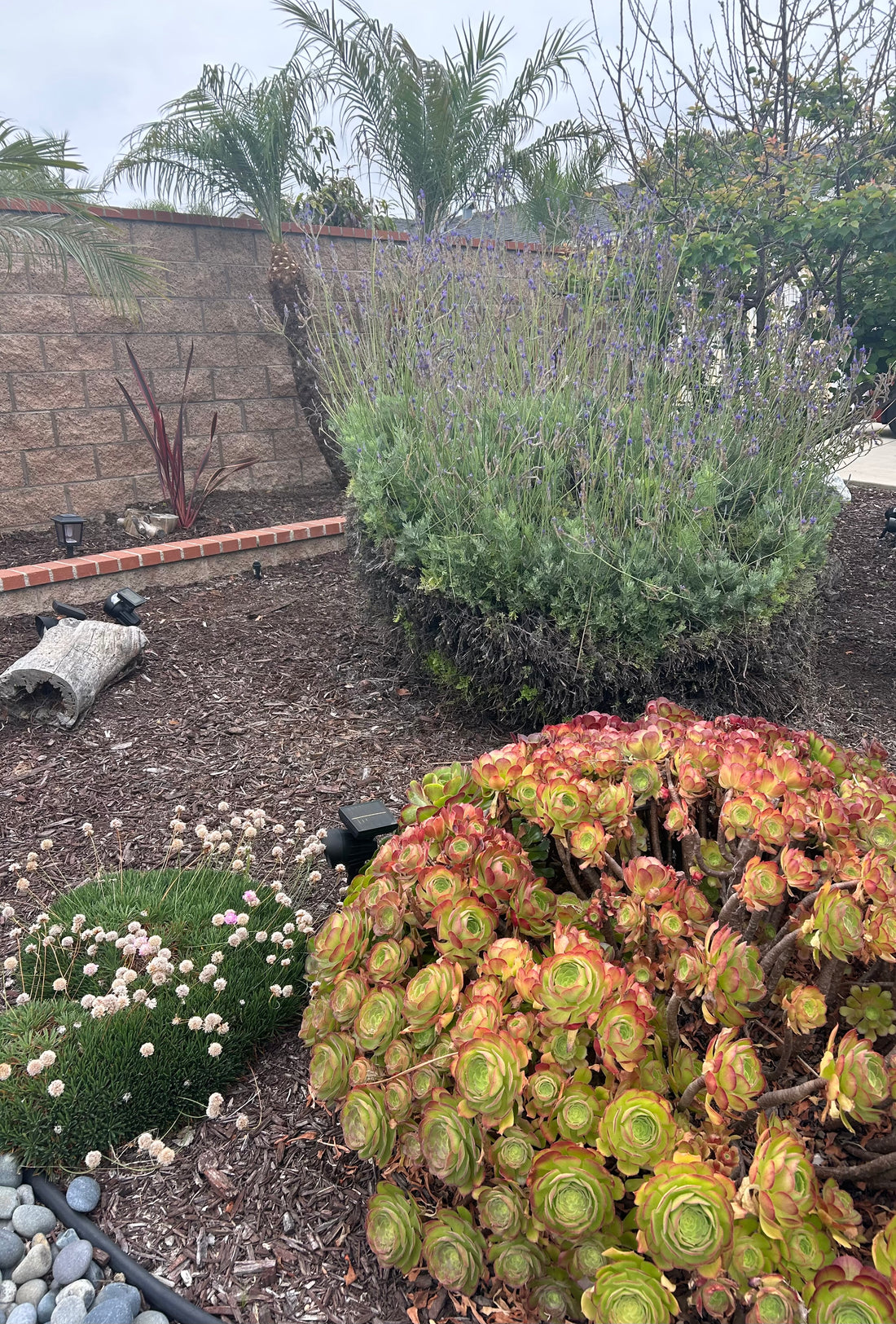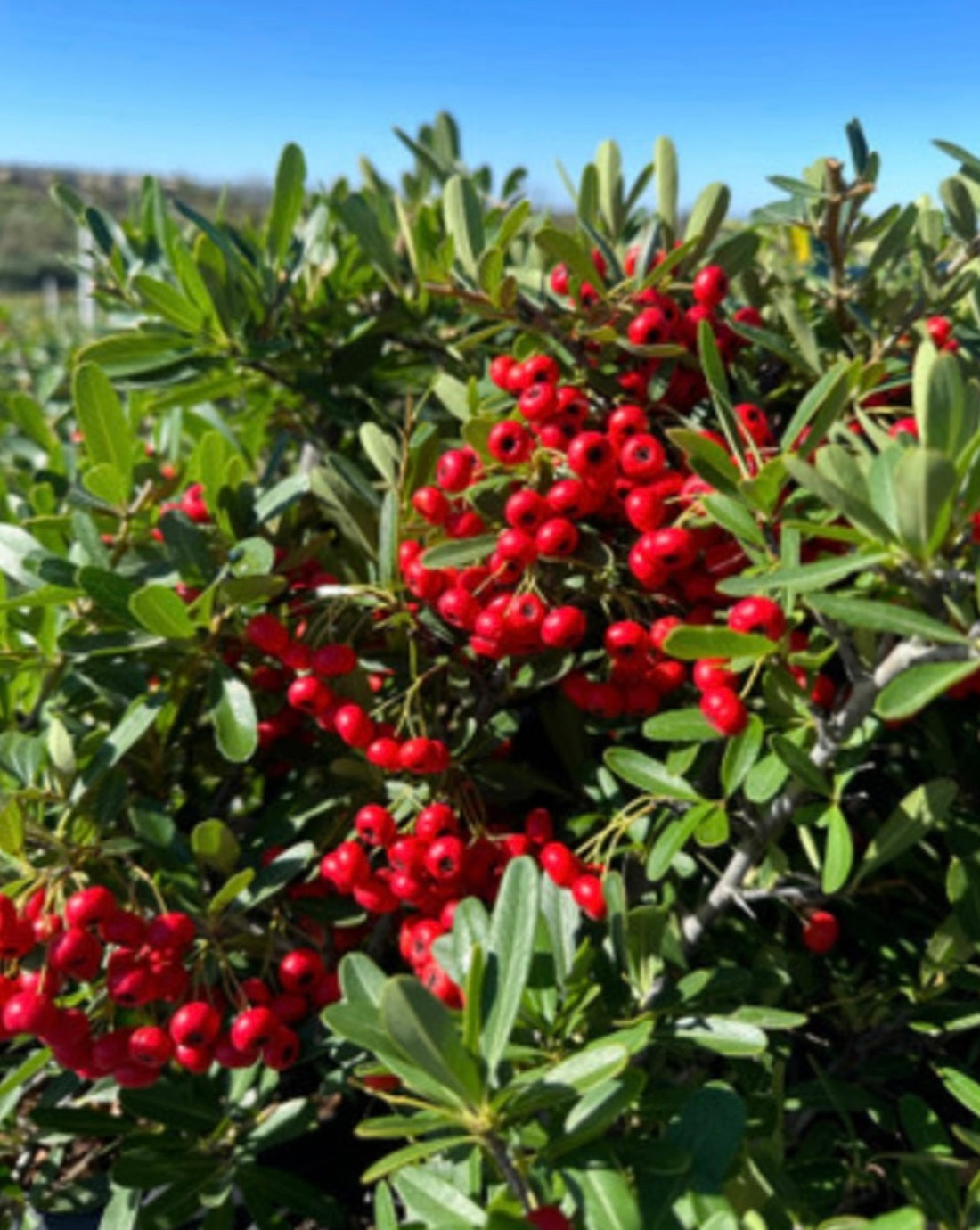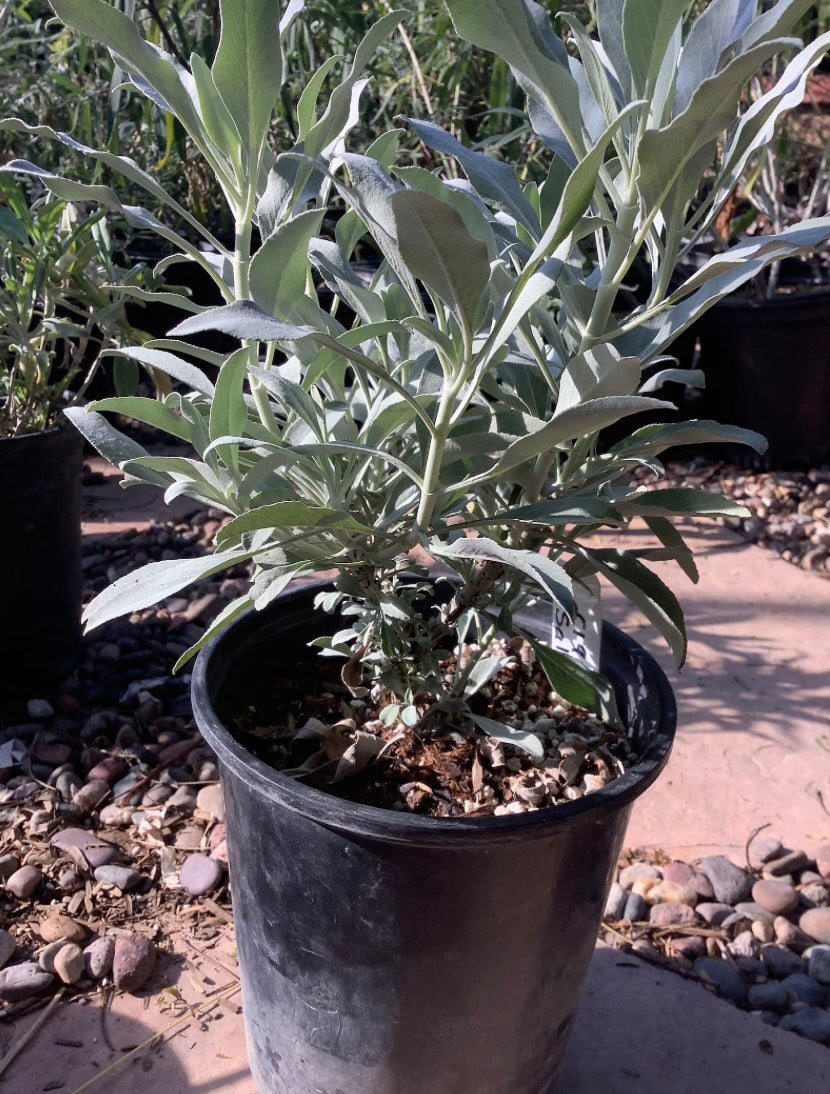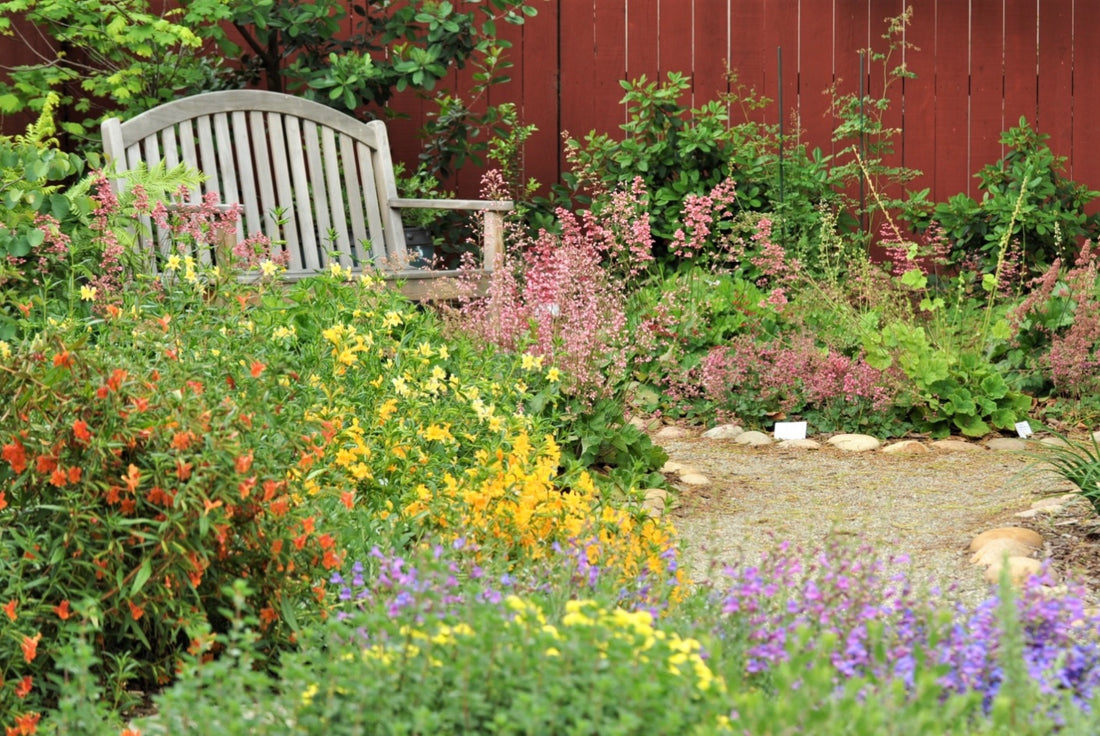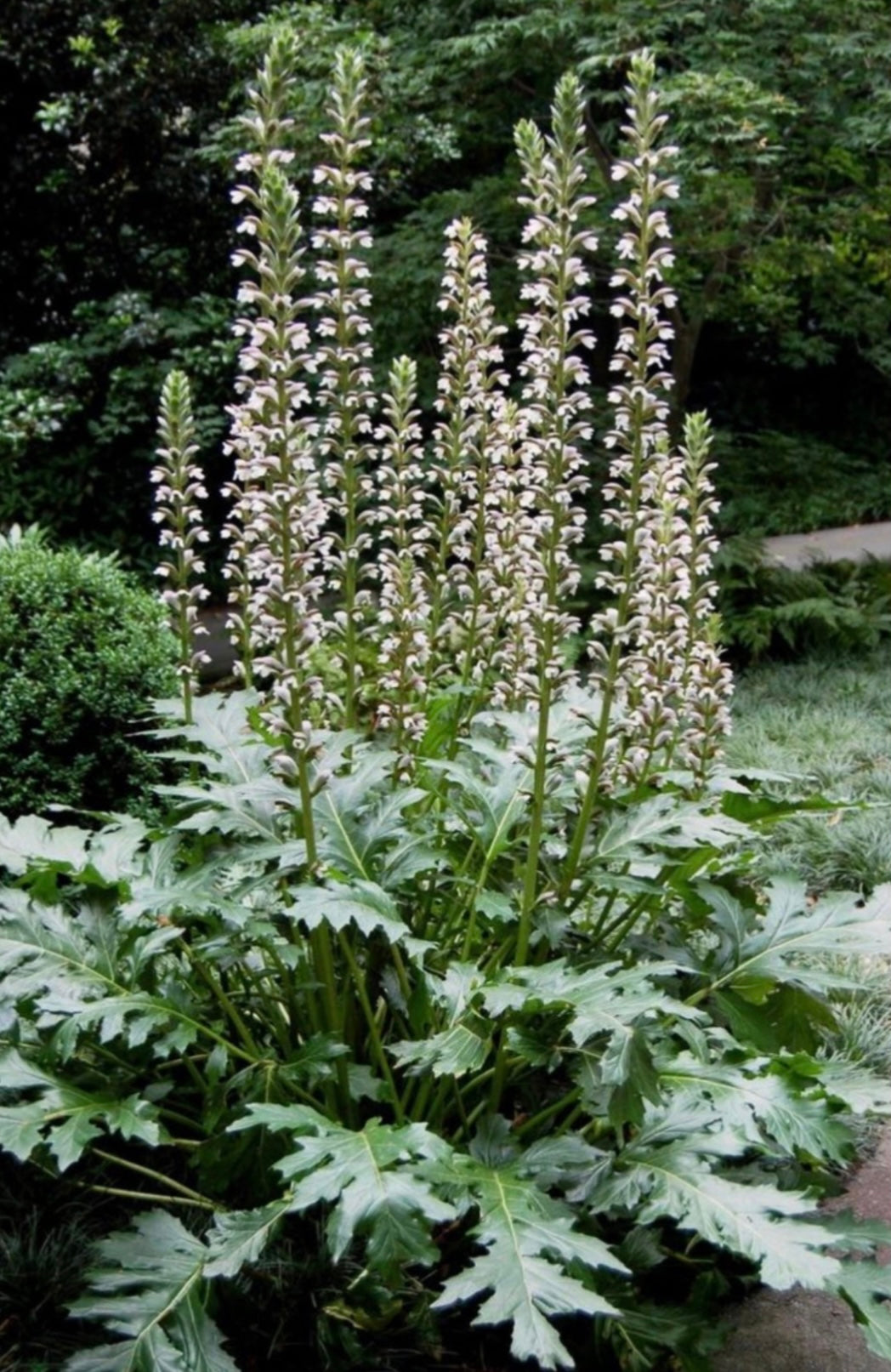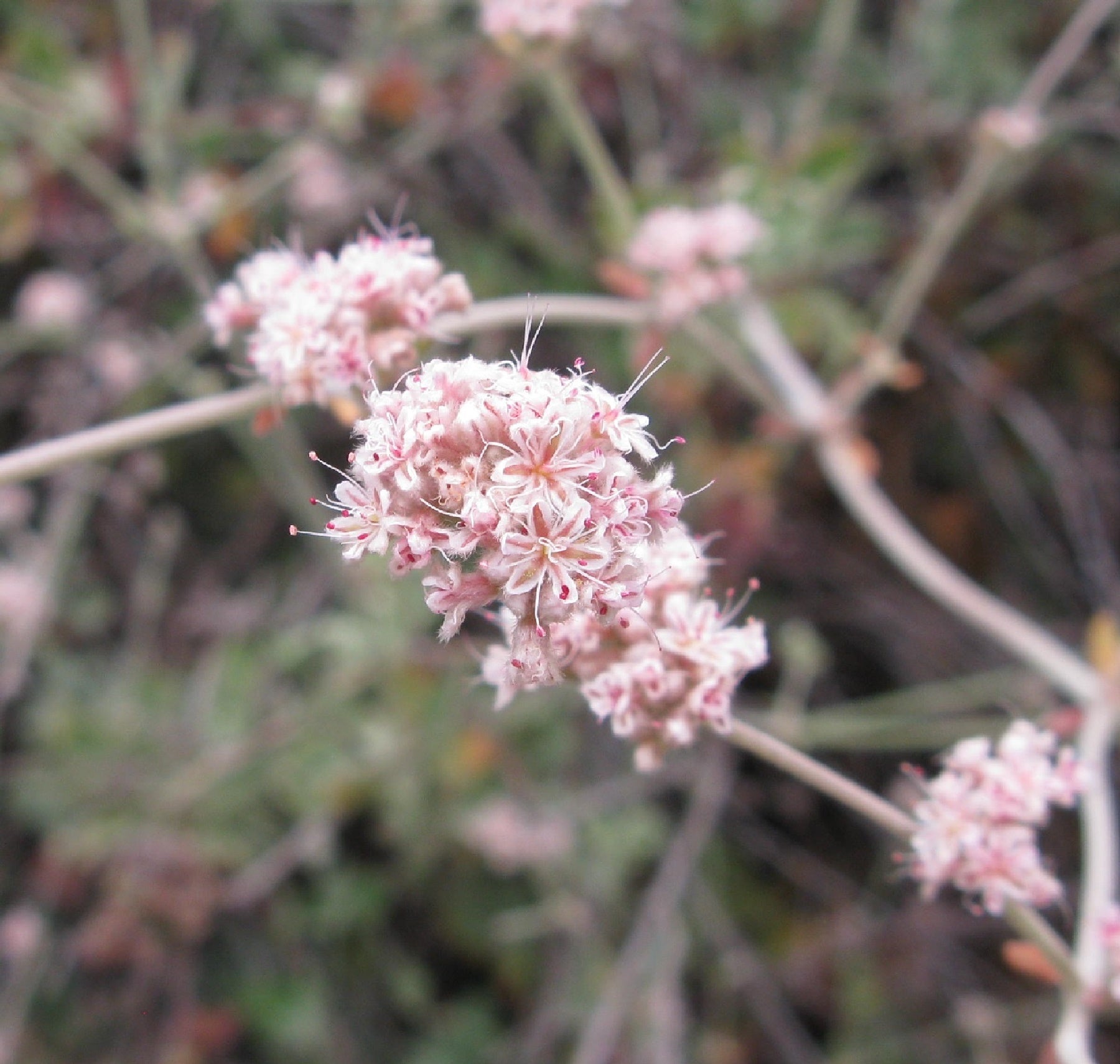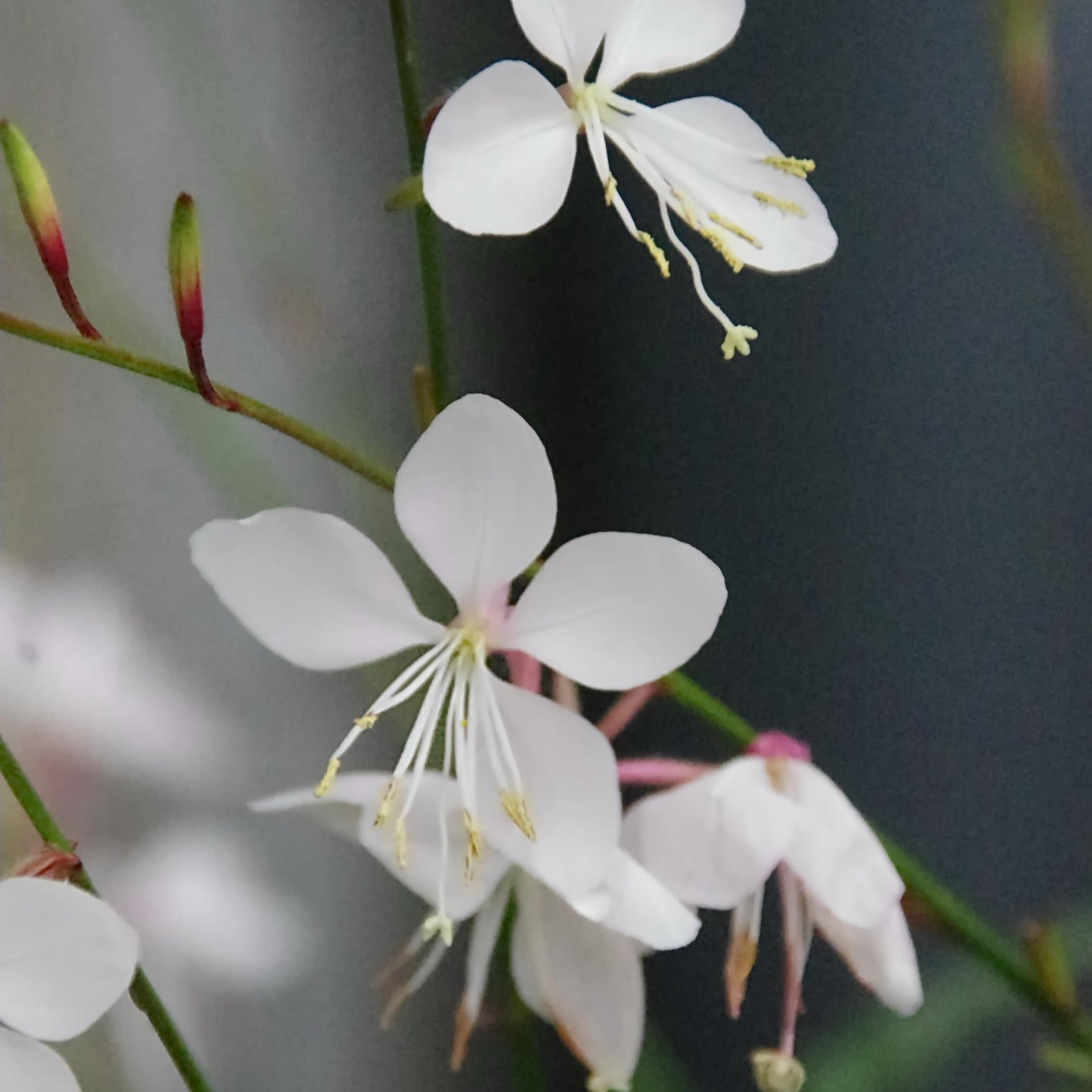Blogs
How to Care for Mail Order Plants
Buying plants online is fun and by following simple yet effective steps to care for mail order plants, you can create a beautiful garden.
Learn more10 Most Popular Landscape Plants
Discover the 10 most popular landscape plants that transform your garden design. From low-maintenance favorites to stunning greenery, find the best plants for landscaping your outdoor space.
Learn moreCreative Landscaping with Succulents
Drought tolerant succulents are low maintenance plants for creative landscaping ideas.
Learn moreSanta Cruz Firethorn Pyracantha koidzumii Santa Cruz Plant
Santa Cruz Firethorn Pyracantha koidzumii Santa Cruz Plant The Santa Cruz Firethorn, scientifically known as Pyracantha koidzumii ‘Santa Cruz’, is a beautiful plant known for its glossy evergreen foliage and vibrant berries. It’s a popular choice for gardens due to its ornamental value and ability to attract birds with its berries. It’s also quite hardy and can tolerate various soil types and climates, making it a versatile addition to landscaping. How to Grow Santa Cruz Firethorn Here’s a general guide on how to grow the Santa Cruz Firethorn plant Pyracantha koidzumii ‘Santa Cruz’: 1. Location: Choose a location that receives full sun to partial shade. The plant can tolerate a wide range of soil types but prefers well-draining soil. 2. Planting: Plant your Firethorn in the spring or fall. Dig a hole that is slightly larger than the root ball of the plant. Place the plant in the hole, backfill with soil, and water thoroughly. 3. Watering: Keep the soil consistently moist, especially during the plant’s establishment period. Once established, the Firethorn is moderately drought-tolerant but still benefits from regular watering during dry spells. 4. Fertilizing: Apply a balanced fertilizer in the spring to promote healthy growth and flowering. Follow the manufacturer’s instructions for the proper application rate. 5. Pruning: Prune the plant in late winter or early spring to shape it and remove any dead or damaged branches. Wear gloves when pruning, as the plant has sharp thorns. 6. Mulching: Apply a layer of mulch around the base of the plant to retain moisture, suppress weeds, and insulate the roots during extreme temperatures. 7. Pests and Diseases: Keep an eye out for common pests like aphids, scales, and spider mites. Treat any infestations promptly with insecticidal soap or horticultural oil. Firethorns are generally resistant to diseases but may occasionally encounter issues like fire blight or scab. 8. Support: Provide support for young plants if needed, especially if you live in a windy area. Following these guidelines should help you successfully grow and maintain your Santa Cruz Firethorn plant. It’s a beautiful addition to gardens and landscapes, adding year-round interest with its foliage, flowers, and berries. Benefits of Growing Santa Cruz Firethorn Plants Growing Santa Cruz Firethorn plants (Pyracantha koidzumii ‘Santa Cruz’) offers several benefits: 1. Ornamental Value: The plant is prized for its attractive evergreen foliage, clusters of white flowers in spring, and vibrant berries in fall and winter, adding beauty to gardens and landscapes. 2. Wildlife Attraction: The berries of the Firethorn are a valuable food source for birds, attracting them to your garden and supporting local wildlife. 3. Privacy and Security: The dense growth and thorny branches of Firethorn plants make them excellent choices for creating privacy screens, hedges, or barriers for added security. 4. Low Maintenance: Once established, Firethorn plants are relatively low maintenance, requiring minimal watering and occasional pruning for shaping and maintenance. 5. Versatility: Firethorns are versatile plants that can tolerate various soil types and environmental conditions, making them suitable for a wide range of landscapes and gardens. 6. Erosion Control: Their dense root systems help prevent soil erosion, making them useful for landscaping on slopes or areas prone to erosion. 7. Attractive to Pollinators: The flowers of Firethorn plants attract pollinators such as bees and butterflies, supporting biodiversity in your garden. 8. Seasonal Interest: With its evergreen foliage and seasonal changes in berries, Firethorns provide year-round interest and color to your outdoor space. Overall, growing Santa Cruz Firethorn plants enhances the visual appeal of your garden, supports wildlife, and offers practical benefits such as privacy, security, and erosion control.
Learn moreCultural Significance and Uses of White Sage Plant
White sage, scientifically known as Salvia apiana, holds deep cultural significance and is widely used in various practices
Learn more10 Simple Ways to Create a Native Garden
Creating a native garden is a fantastic way to support local biodiversity and create a sustainable, low-maintenance landscape. Here are the top 10 ways to plant a native garden: 1. Research Native Plants: Start by researching native plants that are indigenous to your region. Consider factors like soil type, sunlight exposure, and water requirements. 2. Plan Your Garden: Design a layout for your garden, keeping in mind the mature size of plants, their growth habits, and any companion planting strategies. 3. Choose Native Trees and Shrubs: Incorporate native trees and shrubs into your garden design to provide structure, shade, and habitat for wildlife. 4. Select Wildflowers and Grasses: Include a variety of native wildflowers and grasses to add color, texture, and interest to your garden while attracting pollinators. 5. Create Habitat Zones: Develop habitat zones within your garden, such as a pollinator garden, a bird-friendly area with berry-producing plants, or a butterfly habitat. 6. Use Mulch and Compost: Mulch with organic materials like shredded leaves or wood chips to retain moisture, suppress weeds, and improve soil health. Compost adds nutrients to the soil. 7. Practice Water Conservation: Choose drought-tolerant native plants that require minimal irrigation once established. Use rain barrels or a drip irrigation system to conserve water. 8. Avoid Chemicals: Maintain a chemical-free garden by using natural pest control methods, such as companion planting, beneficial insects, and hand-picking pests. 9. Encourage Wildlife: Incorporate features like bird feeders, bee houses, and water sources like birdbaths or a small pond to attract and support local wildlife. 10. Regular Maintenance: Keep your native garden healthy with regular maintenance tasks like weeding, pruning, and monitoring for pests or diseases.By following these steps, you can create a beautiful and thriving native garden that benefits the environment and enhances your outdoor space.
Learn moreAcanthus Mollis Bears Breeches Plant
The Enchanting Acanthus Mollis Bears Breeches PlantNative to the Mediterranean region, the Acanthus Mollis, commonly known as Bears Breeches, is a plant that adds a touch of elegance to any garden. Let's delve into the intriguing world of this unique plant.Characteristics of Acanthus Mollis Large, glossy, dark green leaves with distinctive spiky edges Tall flower spikes adorned with hooded, purplish-pink blooms Thrives in partial shade and well-drained soil Cultural SignificanceThe Acanthus plant has a rich history and has been used in art and architecture for centuries. Its leaves are the inspiration behind the iconic Corinthian columns in ancient Greek and Roman designs.Growing and Caring for Acanthus MollisTo cultivate a thriving Acanthus Mollis in your garden, follow these tips: Plant in a sheltered spot with partial shade Ensure well-draining soil to prevent waterlogging Water regularly but avoid overwatering Remove spent flower spikes to encourage new growth Benefits of Acanthus Mollis Attracts pollinators like bees and butterflies to your garden Low maintenance and drought tolerant once established Provides a striking focal point in any landscape design Embrace the allure of the Acanthus Mollis Bears Breeches plant and enhance the beauty of your outdoor space with this captivating botanical wonder.
Learn moreErigeron karvinskianus: The Santa Barbara Daisy Guide for Low-Maintenance Gardens
Erigeron karvinskianus, also called Mexican Daisy or Mexican Fleabane, is a hardy perennial valued for its long bloom period, cascading trailing habit, and versatility across borders, containers, and rockeries. Its small daisy-like flowers and ease of cultivation make it ideal for both beginner and experienced gardeners. Color Transformations: Why Mexican Daisy Flowers Fade from White to Pink The flowers of Erigeron karvinskianus transition from white to soft pink, creating dynamic seasonal interest in gardens. Why do Mexican Daisy flowers change color? Flower color shifts primarily with age; newly opened blooms are white and gradually develop pink or mauve tones as pigments mature. Environmental triggers such as sunlight exposure, temperature, and nutrient levels can subtly influence the pace and intensity of the change. Does the color change affect pollinators? No. The nectar remains accessible and attractive to pollinators throughout the bloom cycle, supporting insects even as petals shift in color. This makes it a reliable nectar source for bees, butterflies, and other pollinators. Using Erigeron karvinskianus as Living Walls and Cracks: How It Softens Hardscapes Its trailing, mat-forming habit allows Mexican Daisy to drape over walls, fill cracks between paving stones, and cascade from containers. Can Mexican Daisy grow in wall cracks or between paving stones? Yes. Thin stems can root in soil pockets or crevices, creating natural draping that softens hard surfaces while maintaining structural resilience. Its low height prevents obstruction, while stems spread horizontally, filling gaps without overwhelming surrounding plants. How do I design it along walls or rocks? Plant in sunny, well-draining locations and provide enough space for stems to cascade. For long-term health, prune lightly to remove dead or woody stems, and monitor for crowding to allow air circulation and reduce disease risk. [productList] Self-Seeding Behavior: Benefits & When It Becomes Invasive Mexican Daisy self-seeds freely, which can help fill garden areas naturally but may require management in contained spaces. Is Mexican Daisy invasive? Self-seeding is generally beneficial in garden beds or naturalized areas, ensuring continuous bloom coverage and groundcover. In mild climates or unmanaged areas, seedlings may sprout beyond intended boundaries, potentially outcompeting slower-growing plants. How do I control unwanted spread? Remove excess seedlings early, deadhead flowers before seed formation, or use physical barriers to contain spread. Dividing mature clumps can also prevent overcrowding and rejuvenate plants. Container & Hanging Basket Uses: How to Make Santa Barbara Daisy Shine in Pots Its trailing habit and continuous bloom make it ideal for container displays. What potting mix is best? A well-draining mix of garden loam, sand, and organic matter supports healthy root growth while preventing waterlogging. How should I water in containers? Keep the soil moist but avoid saturation; container plants dry more quickly than in-ground ones. Water when the top inch of soil feels dry and use a saucer or drip tray to avoid standing water. How do I maintain blooms in pots? Regular deadheading encourages prolonged flowering, while light pruning of trailing stems maintains shape. Fertilize sparingly in spring with a balanced slow-release fertilizer to support consistent bloom production. Cold & Coastal Tolerance: Can Mexican Daisy Survive in Your Zone? Erigeron karvinskianus is versatile across climates but thrives best in specific conditions. What zones are suitable for Erigeron karvinskianus? It is hardy in USDA zones 8–11. Frost may damage above-ground stems in colder areas, but roots often survive and produce new shoots in spring. Mulching can provide additional winter protection in borderline zones. Is it salt and wind tolerant? Yes. It tolerates coastal wind, moderate salt spray, and exposed sites, making it suitable for seaside gardens. Well-draining soil and partial protection from extreme wind improve performance. Wildlife Contribution: Butterflies, Bees & Mexican Daisy’s Role in Supporting Insects Mexican Daisy is valuable in pollinator gardens and wildlife-friendly landscaping. Does it attract pollinators? Yes. Its small, nectar-rich flowers support bees, butterflies, and other insects. Blooming from spring through late fall in many climates ensures a continuous food source. How can I maximize wildlife benefits? Plant in full sun for optimal nectar production, cluster multiple plants for extended bloom coverage, and avoid pesticide use. Mixed plantings with complementary nectar sources encourage more diverse pollinator activity. Maintaining Health: Pruning, Deadheading, and Rejuvenation Regular care keeps the plant vigorous and blooming over multiple seasons. When should I prune or deadhead? Deadhead spent flowers throughout the growing season to maintain bloom quantity and quality. Prune lightly after flowering to remove woody or leggy stems and encourage a denser habit. Can I rejuvenate older plants? Yes. Divide crowded clumps in early spring or late fall to rejuvenate growth, stimulate flowering, and manage spread. Replant divisions in well-draining soil for optimal establishment. Cost & Value: Why Mexican Daisy Is High Impact for Low Maintenance Gardens Erigeron karvinskianus provides aesthetic and ecological benefits with minimal effort. Is it low-maintenance? Yes. Once established, it requires little water, tolerates poor soils, and naturally fills gaps through self-seeding. Why is it considered high impact? Its long flowering season, dynamic color shifts, trailing habit for softening hardscapes, and pollinator support deliver both visual and ecological benefits without intensive maintenance. Gardeners gain high aesthetic and functional value relative to its cost and care requirements.
Learn more






